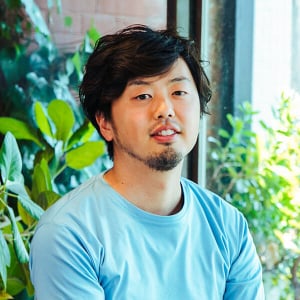
Design research for
exploring opportunity areas for an aged society
Outline
Research project involving professionals, companies, and universities worldwide
In collaboration with Jan Chipchase* from Studio D, Loftwork conducted design research in three cities (Tokyo and Yoshino in Japan, and Chengdu in China) under a theme of “aging and aged society,” based on a METI-commissioned, “Industrial Technology Research Project in FY2016 (Study on Formulation of Business Models Originating from Social Issues and Seeds for Technologies).” The project details are summarized in “Transformation: A Foundational Study on Aging in Japan and China.”
Through a method called design research, this project revealed the essence of aging issues that the world is facing, and people’s realistic ideas and attitudes toward the very “aging” issue.
The research was conducted as a foundational study, not for directly leading to solutions of specific problems, but for providing opportunities to open up new concepts and discussions to address issues of an aged society. In order to utilize the research findings as a first step for application in new industries and businesses, the research team consisted of engineers and researchers from Panasonic Corporation and NEC Corporation, and members from Keio University.
* Jan Chipchase was Executive Creative Director of Global Insights at frog, a design and innovation consultancy. He established Studio D and is now working on design research worldwide.
Summary
- Client: Industrial Science and Technology Policy and Environment Bureau, METI
- Project period: September-December, 2016
- Location: Tokyo, Yoshino, and Chengdu (China)
- Research theme: Aging, and the society, people’s behavioral patterns, and ways of thinking that are related to aging
- Research content/subjects: Interviews in various styles with a total of 170 participants, including interviews with experts, in-depth interviews for about 90-180 minutes, group interviews, and Ad-hoc interviews (improvised interviews in various environments surrounding the research theme).
Outputs
This project was part of an attempt for future Japan to become the world’s role model, as an advanced country in terms of problem solving. The report was published with a Creative Commons license (CC BY-NC-SA 4.0), with the expectation that the research achievements would become a useful resource for many people in expanding their knowledge on “aging” beyond the project. In addition, “Design Research 101” summarizes the knowledge in design research, and 161 pictures that were accumulated during the research process are also publicly available.
Transformation: A Foundational Study on Aging in Japan and China
Concepts: further segmentation of existing life stage categories
In order to understand aging in more detail, we formulated a hypothesis based on a preliminary survey, and focused on the Mature Adulthood stage (Ages 50+) among the 12 life stages in Thomas Armstrong’s Twelve Stages of Human Development theory. The stage was segmented into four new life stages (shown in red). A framework was made to provide an overview of the entire research.

Findings: conceptualization of research findings
We published the research findings with eight frameworks.
Based on the interviews with a total of 170 people, we tried to visualize the meanings of aging, including items that tend to be regarded as tacit agreements, through a model that visualizes the transition of phases toward retirement for each attribute, and a reciprocal relationship model that represents transitions of giving/receiving roles within three generations in a family.

Archetypes: development of five symbolic archetypes through field research
They are defined as archetypes for designing new businesses, products, and services. Common traits were extracted from the characteristics, behaviors, and thoughts of the 170 research subjects in picturing five elderly archetypes.
In this research, they are positioned as fictional but plausible archetypes that cover all research subjects, and are different from persona (a selected existing archetype—a representation of the entire group of research subjects)—a term commonly used in marketing.

Opportunity Areas: Definition of nine areas and making of a blueprint for research and commercialization from the next phase and after.
Based on insights from the field research and five defined archetypes, nine useful opportunity areas were defined for creating new businesses, products, and services.
We widely addressed readily apparent issues, such as physical/mental deterioration and health/economic problems, and summarized them as a theme to be further examined in the later phases.

「Transformation: A Foundational Study on Aging in Japan and China*」(日本語・11.9MB)
「Transformation - A Foundational Study on Aging In Japan and China*」(英語・10.8MB)
「Design Research 101 - Practical Guidelines Based on a Design Research Project on Aging Society.」(日本語・7.7MB)
Photo Library(flickr)
The above-mentioned documents / pictures are licensed and publicly available under the Creative Commons license(CC BY-NC-SA 4.0*). Under the purpose of not-for-profit purposes, this license is used to display appropriate credits, paste a link to a license, if there is any change, indicate that fact and redistribute it if you grant the same license, use / redistribution It is possible to. Please contact Loftwork Public Relations for commercial purposes(pr@loftwork.com)
*Transformation images, figures, and content are published under a Creative Commons, Attribution-NonCommercial-ShareAlike 4.0 International License. https://creativecommons.org/licenses/by-nc-sa/4.0/
*This document is different from the report of the Ministry of Economy, Trade and Industry ‘s commissioned work “Industrial Technology Research Project in FY2008 (Investigation related to construction of business model starting from social issues and technical seeds)”.
Process
The design research process of this research and associated knowledge are summarized in “Design Research 101: Practical Guidelines Based on a Design Research Project on Aging Society.” These guidelines were made to support the conduction of design research projects, and to cover information and concepts necessary for such projects.
1 ─ IMMERSION
Immersed in research theme
A preparation period to deepen understanding of the project and its theme. This period includes a trend survey, background survey, and initial hypothesis formulation.
2 ─ RESEARCH PREPARATION
Research preparation
This phase includes: grasping situations in the relevant countries/regions for the selected research areas according to the initial hypothesis formulation; logistics (traveling and residing); and recruiting of interviewees and local guides as cooperative members for field research. It is no exaggeration to say that the resulting research quality is determined by recruitment of the interviewees and local guides.
3 ─ IN-FIELD RESEARCH
In-field research
Field surveys are conducted in each area. The demographic subjects are interviewed for about 90-180 minutes in their houses or at places deeply associated with them (In-depth interview), interviewed for about 10-60 minutes at places related to a theme (Ad-hoc interview), or observed for a few minutes to a half day (Observation).
Interviewers observe the everyday lives and routines of the subjects to guide their answers, in an effort to verbalize their unconscious ideas, in addition to their thoughts. Along with daily debriefing, synthesis sessions were held every few days to frequently update and improve the research accuracy.
4 ─ SYNTHESIS
Synthesis of research achievements
In order to obtain meaningful insight from the raw data (such as observations and recorded comments), methods such as the affinity diagram are used, examining the meanings of revealed elements.
The contents are refined through defining an important concept in terms of understanding a theme, and developing frameworks for findings. Furthermore, deeper discussions are conducted on the archetypes and needs of previously overlooked or unsatisfied people. The results are summarized as “opportunity areas” to form an important input for conceiving new products and services.
5 ─ WRITE-UP
DECK preparation
Research results are summarized into a Deck (presentation style document). Careful examinations of the concepts, findings, archetypes, and opportunity areas that are found through synthesis are repeated to further refine the results.
Selection of research photos, illustrations, layout adjustment, and proofing are concurrently conducted to support readers’ understandings. The macro overview and methodology are also organized, and the overall research is reviewed.
Research member list
Selection of research photos, illustrations, layout adjustment, and proofing are concurrently conducted to support readers’ understandings. The macro overview and methodology are also organized, and the overall research is reviewed.
- Studio D|Jan Chipchase, Venetia Tay
- loftwork|Chiaki Hayashi , Mami Jinno , Minori Kuwabara , Shinya Kunihiro , Aki Kawana
- Partner of University|Keio University Graduate School of System Design and Management :Naohiko Kotake , Akira Kodaka , Kahori Aizaki , Teruka Sumiya/Keio University:Koji Sasaki
- Partner of Business|NEC Corporation:Tsunehisa Kawamata , Eiji Hirao, Naomi Yano/Panasonic Corporation:Takayuki Fukui
Member

Mami Jinno
Loftwork Inc.
Creative Director

Minori Kuwabara
Loftwork Inc.
Creative Director
Voice
“The real pleasure of this project was in "to look at the life of interviewees from their perspective," "to integrate the data obtained from research and to create new discoveries". While taking the theme of aging as a major theme, it is first necessary to build a relationship of trust with each of the target persons, carefully observe their conversation and behavior and observation of the surrounding environment. Careful integration of the enormous amount of data obtained in this way leads to a big discovery. In order to obtain more valuable data, you can build a relationship of trust with the local guide before entering the field, stick to the location / space of the research center, paste how to put it, place the key By making rules, we devised to allow time to focus on where we want to maximize our research. In addition, I constantly asked "What is better research?" And I felt it was possible to fully enjoy the real pleasure of the project by flexibly changing the research approach. Since this research was done as a basic survey, I would like to connect this project to future projects.”
Loftwork Creative Director Mami Jinno
“This project was held in Japan and China with a total of about 170 people interviewing, I did it by my approach I had never done before. The process of design research of this time with dynamism that could easily change tomorrow 's schedule was a continuation of thought that the stomach hurts everyday. However, I think that the relationship of trust between the team members who grew up while sleeping together and having a lot of time a day together became a major driving force to overcome them. Rather than reflecting the subject itself, design research, which stands beside the target person and shows what they are seeing, is an opportunity to realize that not only the method but also the approach strongly linked to the team is questioned simultaneously have become.”
Loftwork Creative Director Minori Kuwabara
“The real pleasure of design research lies in where I can not read what happens day by day. In order to enjoy the dynamism, it was important to make a strong relationship of the team. Everyone tried to experience the same role. Share the events that happened in the interview every day. Everyone and the guide guys sleep together. Respect the opinions of the members and make sure to make opportunities for discussion. I believe that the accumulation of small efforts to strengthen such ties brings the realization of the best output that the team has created.”
Loftwork Creative Director Shinya Kunihiro
Next Contents












